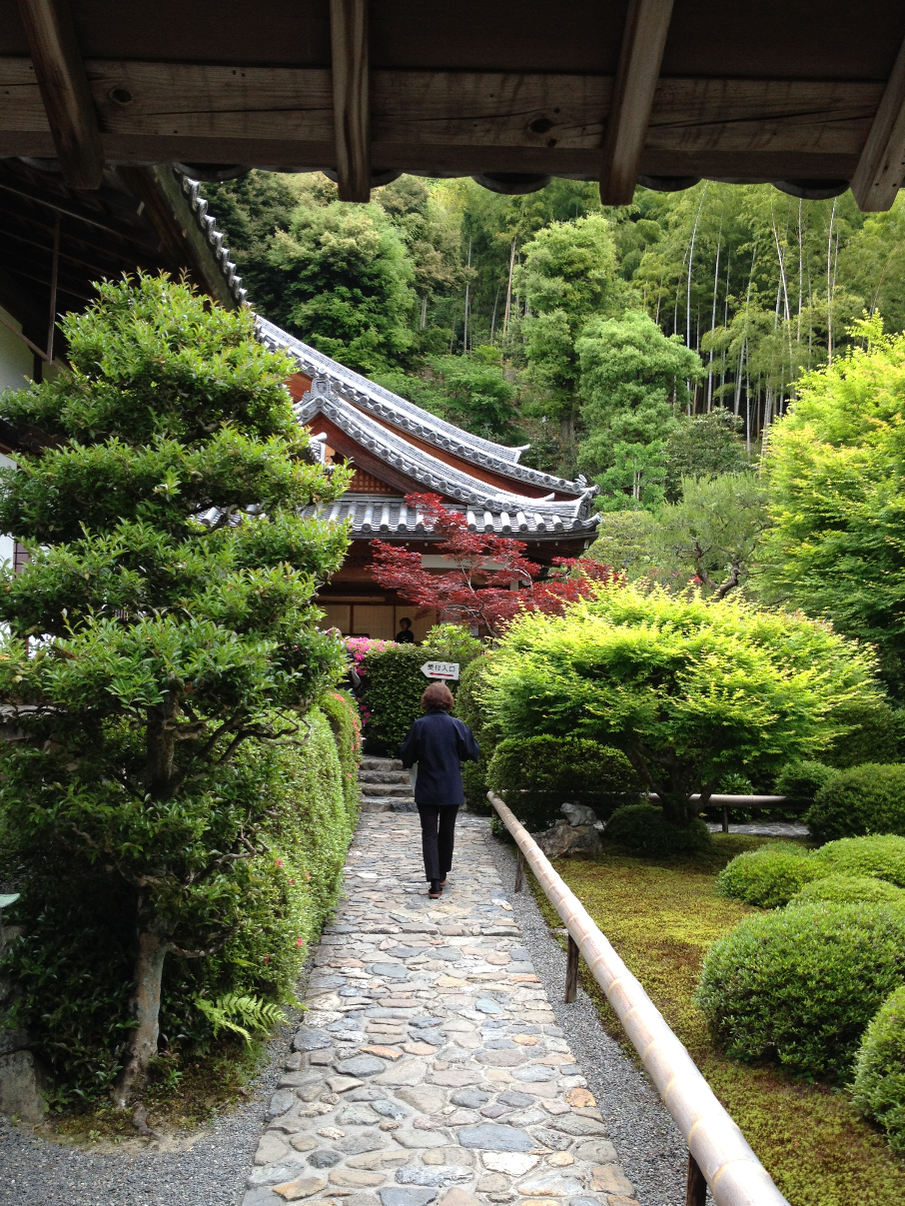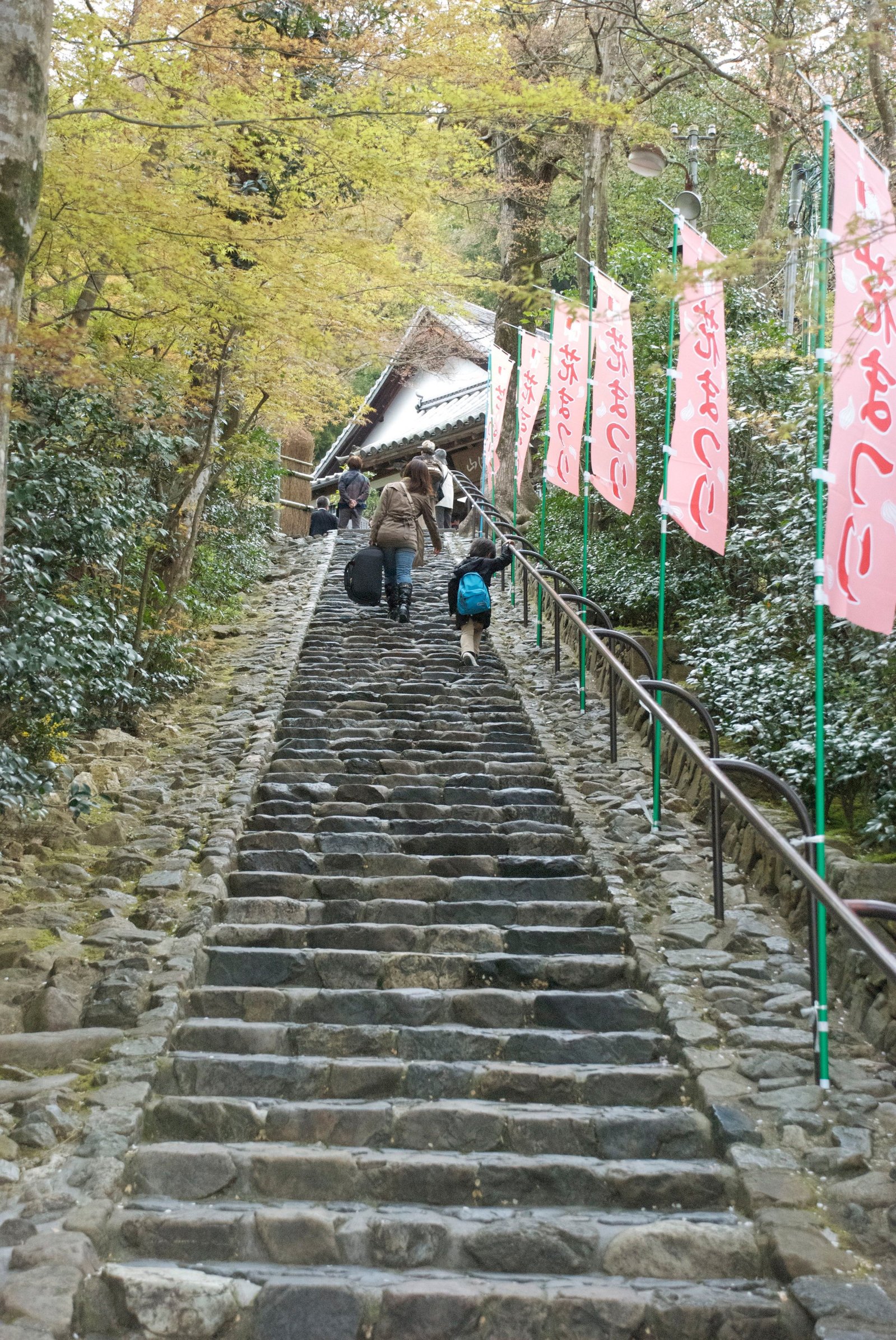Suzumushi Temple, the “bell cricket” temple
December 8, 2022Kyoto is home to many stunning temples. But if you set off towards Arashiyama (嵐山)in the western outskirts of the city, you’ll find Suzumushi-dera (鈴虫寺)or “the bell cricket temple”, located almost directly next to Koke-dera, the Moss Temple. The temple is exactly that, a temple populated with hundreds of chirping crickets.
Getting to the temple requires a 40-minute bus journey from the center of Kyoto, which presents the opportunity of seeing the non-touristy parts of Kyoto flying by; the further west you travel, the more verdant the nature becomes.
When you finally arrive at the temple, clamber up a long flight of stone steps through a dense forest to reach the entrance of the Suzumushi.
The temple itself is modest and unassuming from the outside, which masks the wonderful oddity inside - hundreds of chirping crickets enclosed behind glass cages surrounding a tatami room.
When I took a trip to the temple, a jovial-looking monk perched next to a cricket cage informed us that that photos aren`t allowed inside the room, as this may disturb the crickets. He then invited us to sit and help ourselves to the Japanese tea and sweets that were neatly laid out on a long low-lying table. While my bones creaked and snapped as I assumed the seiza position, our friendly monk explained the origins of the ‘cricket temple’s lively 30-minute lecture all in Japanese.
The temple was founded in 1723, and one of its inhabitants felt a deep connection with the crickets that surrounded the area. He admired their industriousness and their short life span, as they live each day to the fullest potential. He felt Buddhist monks have a similar mind-set, and sought to remind his fellow monks of this every day.
It was a fascinating talk, but I noticed that I was becoming uncomfortably hot. The tatami room was kept warm throughout the year because the crickets thrived in a warmer environment. It wasn’t practical to persuade the crickets to turn down the air conditioning, so I mopped my brow, unbuttoned my shirt to the navel, and continued listening.
The monk got off the topic of crickets and spoke about the temple’s famous Jizo statue called Kofuku-Jizo Bosatsu (幸福地蔵菩薩, or the ‘happy jizo’) that stood outside the entrance. Apparently, people travel from all over Japan for its ability to grant wishes. There’s an 80% chance that your wish will come true and finding love is one of the most common desires for visitors. Most Jizo are barefoot, but this actually wears sandals. The reason for this is that he will personally deliver your wish to you, so it is important to remember to give him your address when praying.
After the monk finishes his story and you exit the tatami room, it is quite crowded at the Jizo statue, so I recommend taking this time to take a leisurely stroll around the beautiful temple garden, following a little stone path that weaves in and out of meticulously maintained trees, plants and flowers. It was truly a peaceful experience to be surrounded by the hushed sounds of nature, which made for a welcome change from the endless chirping inside the temple. At certain points in the garden you can see a spectacular panoramic view of Kyoto, which is especially spectacular during Sakura season in spring.
After your walk, head back over to the Jizo statue to make your wish. Before you do, you need to purchase a yellow omamori, and then clasp your hands against it in a praying gesture while making your wish, followed by a short bow.
You keep this charm until your wish comes true, and if/when it does you are expected to return the omamori to the Jizo and thank him.
I must admit, I’m not a big wish-maker but, much to my surprise, the first wish I made when I visited the temple a few years ago came true. Intrigued, I returned a year later to make a second wish, which also came true. And just to make sure it wasn’t a fluke, I recently came back for a third time and guess what, the third wish also came true.
When this happens, it is customary to go back and thank the Jizo for fulfilling your wish. With this track record, I’m sure I’ll be coming back again and again.



